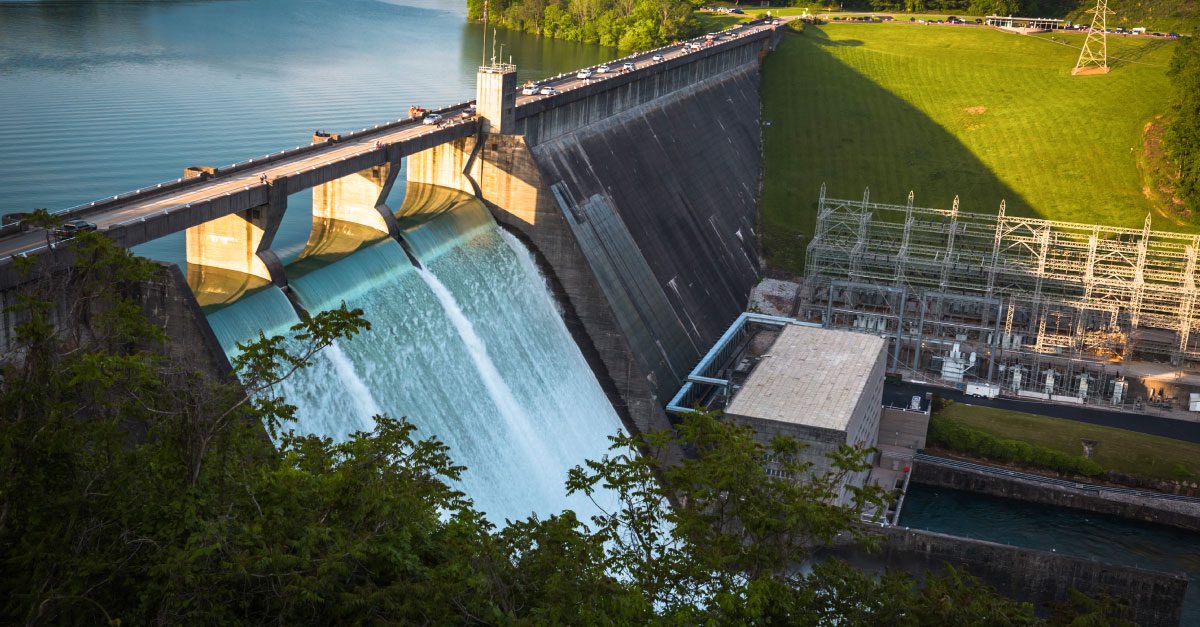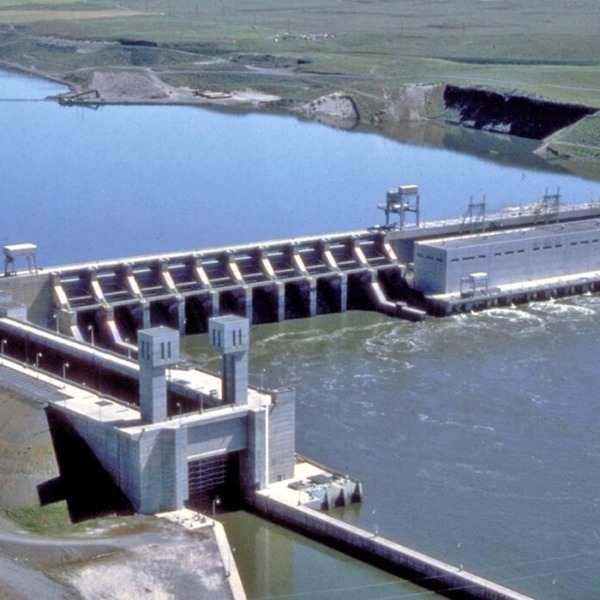As 2020 stands out as a year the world battled a worldwide pandemic, it also stood out for rainfall in the Tennessee Valley in the southeastern United States—the wettest year in 131 years with a record rainfall of more than 70 inches and intense runoff.
Yet, despite the record rainfall, the Tennessee Valley Authority (TVA) averted an estimated $1 billion in flood damages along with uninterrupted electric power service to its customers.
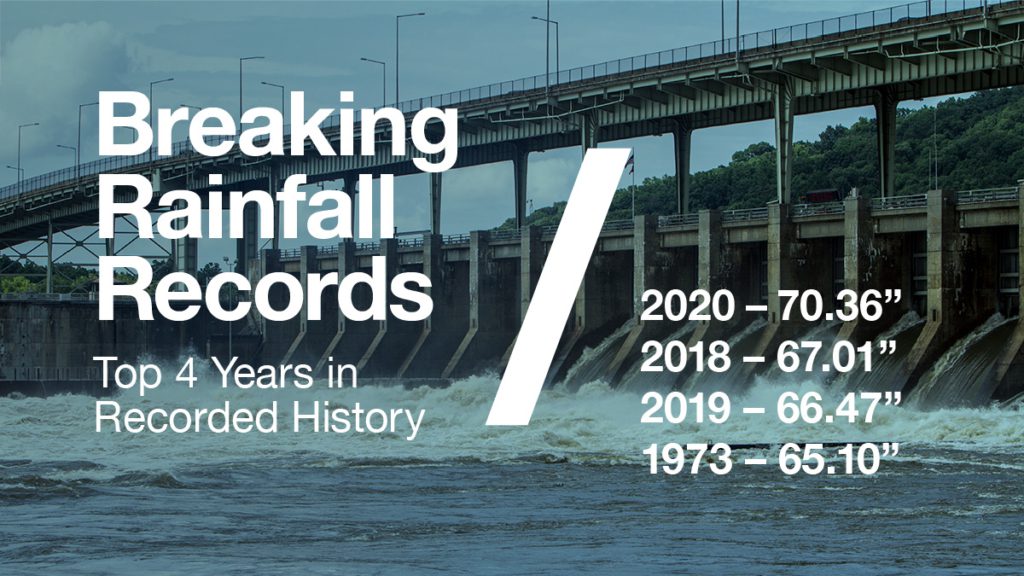
Record-breaking rainfall hit the Tennessee Valley in 2020.
WHY IT MATTERS
The rain started in the southeastern U.S. valley in 2018. The area experienced the highest rainfall in recorded history from 2018 through 2020 with an annual rainfall averaging about 51 inches. At the end of 2020, the valley recorded 70.36 inches for the year—topping the 2018 record of 67.01 inches and 66.47 inches in 2019.
“Before 2018, the previous record had stood for 45 years,” said James Everett, senior manager of TVA’s River Forecast Center (RFC).
Reviewing how TVA managed the rainfall and averted the damages showcases the importance of modern-day forecasting and the value of the systems of dams in the Tennessee Valley to safely manage excess water.
With approximately 40% more rainfall in 2020, the surplus soaking added complexity to an already complex system. Heavy rainfall in the mountainous regions produced intense runoff managed through TVA tributary dams. At the same time, TVA was balancing flows along the mainstem Tennessee River — one of the nation’s largest river systems — to maximize the multiple benefits for valley residents, including electric power generation, flood control, navigation, water supply, water quality, and recreation.
ABOUT TVA
Staffed around the clock, TVA’s River Forecast Center in Knoxville, Tennessee, keeps constant watch on the 41,000-square-mile Tennessee River watershed and river flows at TVA’s 49 dams—29 of those dams have a hydroelectric generating component. The watershed comprises portions of seven states (Tennessee, Alabama, Georgia, North Carolina, Virginia, Kentucky, and Mississippi), with water flowing into the 652-mile-long Tennessee River plus hundreds of miles of tributary rivers that make up over 11,000 miles of reservoir shoreline.
During extreme weather events, dam safety engineers and dedicated staff at the dams use flow control equipment such as spillway and sluice gates and monitor and inspect dams before, during, and after large flow events to ensure the intended performance.
Each year, TVA’s reservoir management saves the region about $300 million in flood damage. Since the completion of TVA’s oldest dam, Norris, in 1936, TVA has averted $9 billion in flood damages.
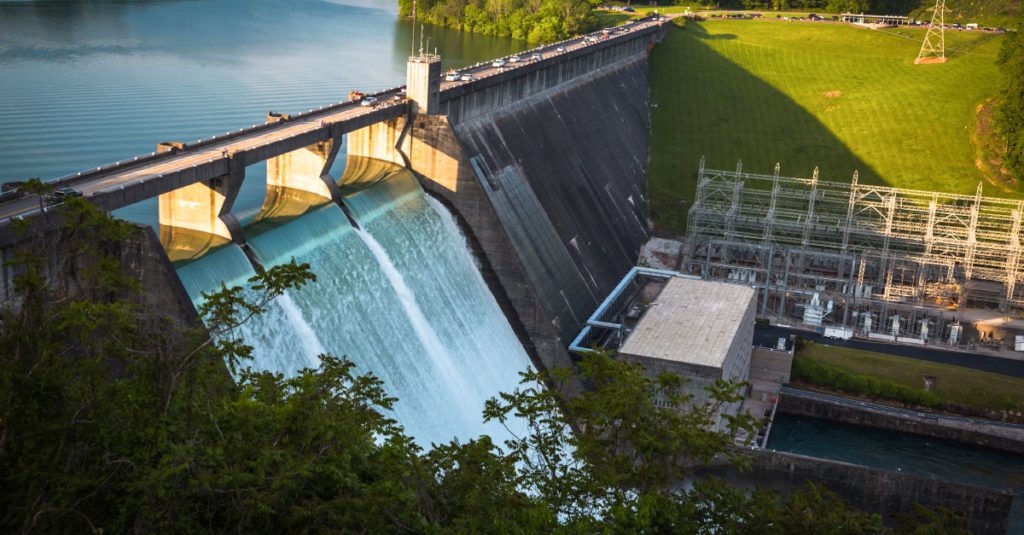
The Norris Dam on Tennessee’s Clinch River was the first dam constructed by TVA and was finished in 1936.
TVA employs modern modeling and reservoir management tools to help prepare for and respond to historic rain events. Its River Forecast Center in Knoxville, Tennessee, manages the complex river system 24/7, which involves the use of remote sensing, advanced modeling, and stakeholder engagement via partnerships with federal, state, and local partners including the National Weather Service, the U.S. Army Corps of Engineers, state officials, and hundreds of local authorities and emergency management officials.
TVA’s hydro generation fleet with its 29 hydro generating facilities that include 109 conventional units plus the Racoon Mountain Pumped Storage Facility are remotely controlled and dispatched from TVA’s power system operations center in Chattanooga, Tennessee, allowing power system operators to quickly bring on hydro generation when needed.
BATTLING CHALLENGES AS THE PANDEMIC HIT
While the historic 2020 rainfall introduced numerous challenges, employees in the hydro generation, river management, and dam safety business units met the incredible demands—even during COVID-19.
The conventional hydro fleet delivered nearly 18,000 megawatt-hours of generation, about 33% above a normal year. In addition to flood control and generation benefits, the system reliably supplied millions of stakeholders with uninterrupted water supply, commercial navigation, water quality, and recreation benefits despite the challenging hydrologic conditions.
“The sites and crews in the field put in countless long days maintaining and operating equipment like sluice gates, spill gates, cranes and, of course, hydroelectric generators, which are all necessary to control flow through TVA reservoirs,” explained Everett.
Without the TVA system of dams acting in concert to regulate the torrential water, major metropolitan areas such as Chattanooga, Tennessee, would have been subjected to water levels dozens of feet higher than flood stage, inundating large portions of the city.
TOOLS AND TACTICS: NEW MODELS AND DATA MANAGEMENT
TVA continues to build and adapt tools, strategies, and methods to effectively manage the Tennessee River despite extreme hydrologic variability, both wet and dry.
In 2017, TVA River Management deployed a new suite of models and data management tools built on the Flood Early Warning System (FEWS) for consistency, more modern water resources management, and modeling also used by the National Weather Service and large hydro operators worldwide.
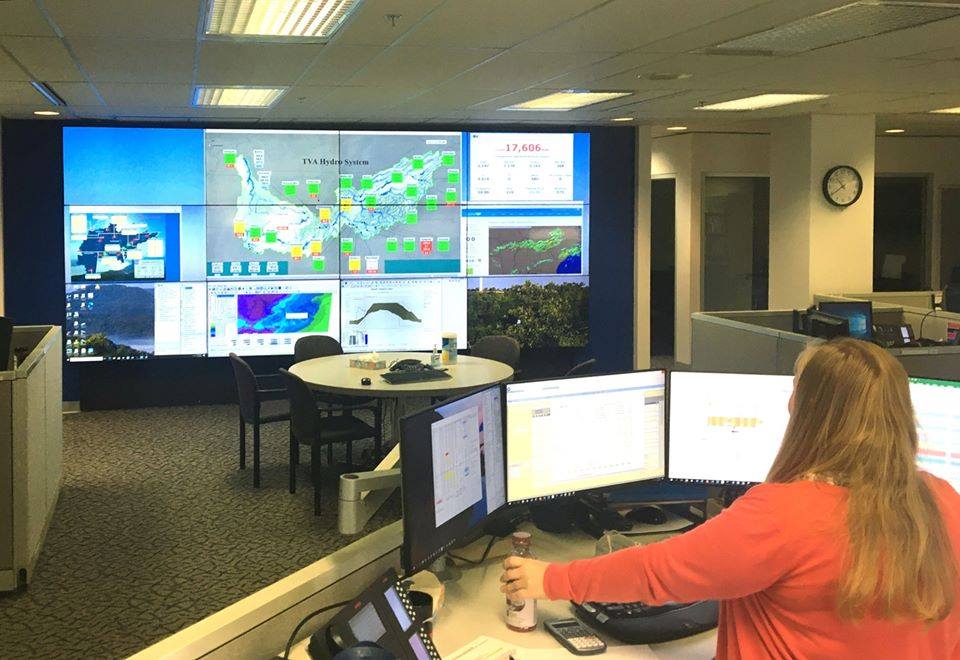
TVA’s River Forecast Center is staffed around the clock 365 days a year.
“TVA worked closely with Deltares (developer of FEWS) to build a river forecasting system that helps us integrate various sources of data into models that TVA uses to manage our system of 49 dams across the Tennessee Valley,” said Everett.
“We are using this forecast system continuously as part of TVA’s River Forecast Center (RFC) in Knoxville, which is staffed 24/7 and has the responsibility for managing the river system for benefits like flood control, navigation, hydroelectric generation, water supply, water quality and recreation,” he said.
According to Everett, the RFC monitors rainfall and streamflow conditions, utilizes rainfall forecasts, and models inflows into reservoirs. That data is used as input to run reservoir routing and hydraulic simulations that are then used to develop multi-day operating plans and forecast lake levels and releases.
The forecasts and release plans are then used in developing hydropower generation schedules for TVA’s automated hydro-control system. Hydropower releases are scheduled at hourly time steps and updated as reservoir conditions and power demand changes. The FEWS system allows us to continually ingest and process new data and adjust hydropower operations in real time and around the clock using integrated simulation and optimization tools, primary Riverware and HEC-RAS.
Further, forecast data is transmitted directly to the National Weather Service so that river forecast projections can be distributed to the public and flood warnings issued when appropriate. Numerous other users like the navigation industry, TVA power system planners, TVA dam safety, TVA nuclear, agricultural interests, and the recreation industry rely on the data and forecasts produced by the TVA River Forecast System.
MEASURABLE RESULTS
During 2019 and 2020, flood control efforts resulted in approximately $1 billion of avoided flood damages across the Tennessee Valley and prevented about $1.6 billion in potential damages.
TVA efforts also resulted in 33% above normal hydro generation that, in turn, helped offset delivered power rates for nearly 10 million people.



